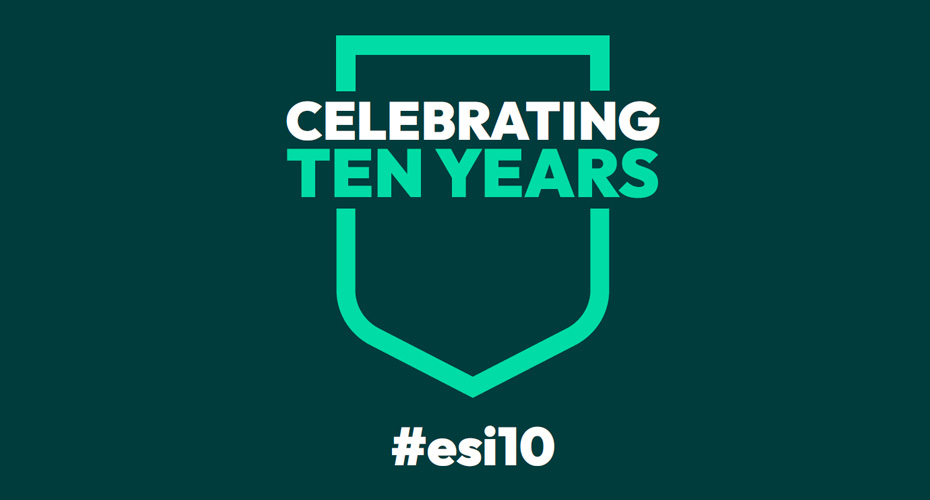Dr Leonardo Micheli
We have been catching up with our very first PhD students and Postdoctoral researchers to see what has happened since they joined us a decade ago. Here you can read about their reflections of working at the ESI, information about what they are doing now and we look ahead to their future plans.
What were you working on when you first joined the ESI?
I did my first year of PhD at Heriot-Watt University, in Edinburgh, and then moved to the Environment and Sustainability Institute (ESI) with my supervisor, Professor Tapas Mallick and his research group, in March 2013. I worked on an exciting international project between UK and India, led by Prof. Mallick. The goal was the development of a hybrid solar-biomass energy system for a rural village in West Bengal, India. I worked on the solar aspect to develop a large system to collect and concentrate the solar light for electricity production. Instead of directly utilising the sunlight, we wanted to concentrate it 500 times to preserve some photovoltaic material and increase the efficiency of the system. I was in charge of designing the electrical and thermal components, in collaboration with a team of the Indian Institute of Technology Madras (IITM), Chennai, India. They were developing the tracking system to make sure the system was always facing the sun. I successfully defended my PhD thesis entitled “Enhancing Electrical and Heat Transfer Performance of High-Concentrating Photovoltaic Receivers” in June 2015 and was awarded a Doctorate in October 2015. During my PhD, I made 3 trips to India, including a 5 month stay at IIT Chennai. That was an unforgettable experience.
What was your proudest achievement?
Difficult choosing only one. The success of the PhD project, in which we brought electricity to a rural place, was an amazing achievement, especially as it meant so much to the people there. I put in long, exhausting hours doing experiments in the lab towards the end of this project, and it paid off and I learnt a lot during this process.
Getting a Marie Skłodowska-Curie Individual Fellowship to return to Europe after a three-year experience at the National Renewable Energy Laboratory (NREL), in Colorado, U.S., was another milestone in my career. I am also extremely happy and proud to be back with a tenure track position in my home country Italy now, after 10 years abroad.
Among the outcomes of my activity I think that DUSST is worth of a mention. This is a low-cost soiling sensor that I developed with some colleagues when I was at NREL and which was patented in 2019. Later on, it was included in the U.S. Department of Energy’s 12.3 million dollar “Small Business Innovation Research and Small Business Technology Transfer (SBIR/STTR)” initiative to finance the development of a market-ready version.
What happened next – where did you go?
After getting my doctorate in 2015, I continued as an Associate Research Fellow in Professor Tapas Mallick’s group at the ESI for a few months. At the end of that year, I moved to the USA to work at NREL, in Colorado. There I changed my research topic slightly. Earlier, I worked with concentrator photovoltaics. At NREL, I moved to the analysis and modelling of standard photovoltaics. In 2018, I was awarded a Marie Skłodowska-Curie Actions Individual Fellowship at the University of Jaén, Spain. In early 2022, I was awarded the “Rita Levi Montalcini” Program for Young Researchers for the project “Soiling Live Estimation for Photovoltaics” (Sole4PV) and moved back to Italy.
What was the most useful lesson you learned at the ESI?
While a workplace is a professional base, it can also be a fun place. At the ESI, I engaged with colleagues from different departments, all joined by the common concern for the environment and sustainability. I still fondly remember some fun activities there (not related to our core study), like the cake competitions, which made PhD life a lot of fun.
The ESI was just starting back then, so we actually set up our labs. It was quite a responsibility to set up a functioning laboratory, something which helped me in the future.
In addition, the ESI holds a special place in my life as I met my girlfriend there. She is a microbiologist and was a visiting PhD student at the ESI for a few months, hosted by Dr Michiel Vos.
What will the ESI be like in another decade – what will we be working on then?
Since I was from the very first cohort of the ESI PhD students, I can say that the ESI back then was an ambitious, young and dynamic place. I hope that creativity and atmosphere is not lost and I hope the ESI will still be a forefront in sustainable research.
As renewable energy researchers, we are not solely asked to minimize emissions during the systems’ operations, but also to address the sustainability issues linked to their development, installation and decommission. As we meet the demand for renewable energies, we should not ignore the need for a sustainable supply chain, for an efficient material use and for a fair coexistence with agriculture and biodiversity. These issues are becoming more and more important as the number of renewable energy systems increases and I cannot think of a more pertinent location than the ESI to tackle them, as it brings together people facing climate change and sustainability related issues.

